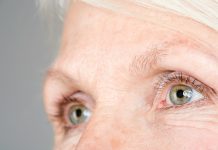
A stroke occurs when the blood supply to part of the brain is interrupted, preventing brain tissue from getting oxygen and nutrients.
Brain cells begin to die in minutes. A stroke is a medical emergency, and prompt treatment is crucial.
Early action can minimize brain damage and potential complications.
The aftermath of a stroke can vary widely depending on where the brain was injured and to what extent. Managing post-stroke complications is critical for recovery and maintaining quality of life.
One of the most common complications after a stroke is physical disability. Strokes can cause paralysis or a loss of muscle control that often affects one side of the body. This can lead to difficulty with walking, balance, and performing daily activities.
Physical therapy is crucial and can significantly help survivors regain strength and coordination over time. Research has consistently shown that tailored rehabilitation programs can improve function even years after a stroke.
Cognitive impairments are also frequent, affecting about one-third of stroke survivors. These can include problems with memory, attention, and problem-solving skills. Cognitive rehabilitation therapy can help stroke survivors improve these skills.
A study in the Journal of Stroke and Cerebrovascular Diseases found that structured cognitive therapies could help mitigate these deficits and improve overall quality of life.
Communication problems are another issue faced by many stroke survivors. Aphasia, which affects the ability to speak, read, or understand language, occurs in about one in four stroke survivors.
Speech and language therapy are vital for recovery, helping individuals regain as much communication ability as possible.
Emotional changes are common as well. Many people may experience depression and anxiety after a stroke due to changes in their brain function and the stress of dealing with the effects of the stroke.
It’s important for stroke survivors and their caregivers to recognize these emotional and psychological challenges. Counseling and medication can be effective treatments.
Support groups where survivors can share experiences and recovery strategies can also provide emotional comfort and practical advice.
Another serious complication is the risk of a second stroke, which is highest in the first few months after the initial stroke. Managing risk factors is critical.
This includes medical intervention to control high blood pressure, diabetes, and cholesterol; lifestyle changes like adopting a healthier diet, quitting smoking, and regular physical activity; and possibly medication to prevent blood clots.
Swallowing difficulties, known as dysphagia, occur in many patients. This condition not only affects nutrition and hydration but also increases the risk of pneumonia due to food or liquid entering the lungs.
Speech and language therapists can teach swallowing techniques, and dietary adjustments can ensure safety and adequate nutrition.
Pain and sensory disturbances can also appear after a stroke. Some survivors experience pain, numbness, or strange sensations in parts of their bodies affected by stroke.
Pain management strategies, including medications, physical therapy, and techniques such as acupuncture or massage, can help alleviate these symptoms.
Lastly, attention to lifestyle and ongoing medical care is essential for living well after a stroke. Regular check-ups, adherence to prescribed treatments, and lifestyle adjustments form the backbone of post-stroke management.
Living after a stroke can be challenging, but with the right care and support, many stroke survivors can regain significant function and live productive lives.
It’s important for both survivors and caregivers to be well-informed about the potential complications and available treatments to manage the journey of recovery effectively.
If you care about diabetes, please read studies about a cure for type 2 diabetes, and these vegetables could protect against kidney damage in diabetes.
For more information about diabetes, please see recent studies about bone drug that could lower risk of type 2 diabetes, and results showing eating more eggs linked to higher risk of type 2 diabetes.
Copyright © 2024 Knowridge Science Report. All rights reserved.



